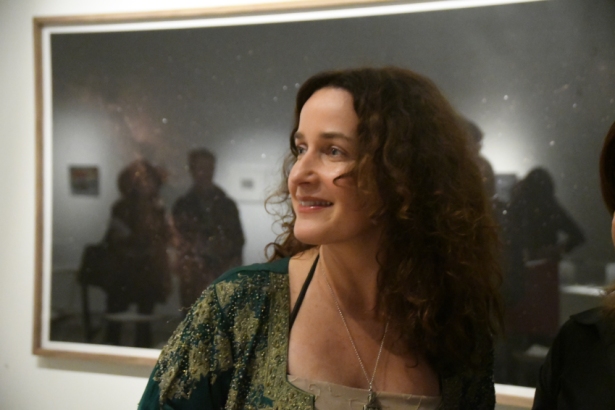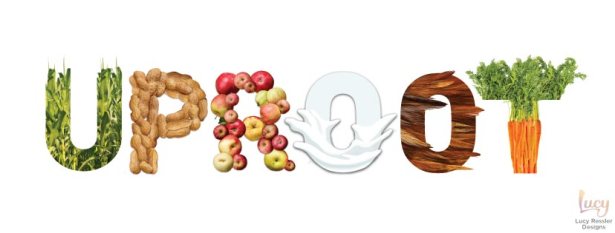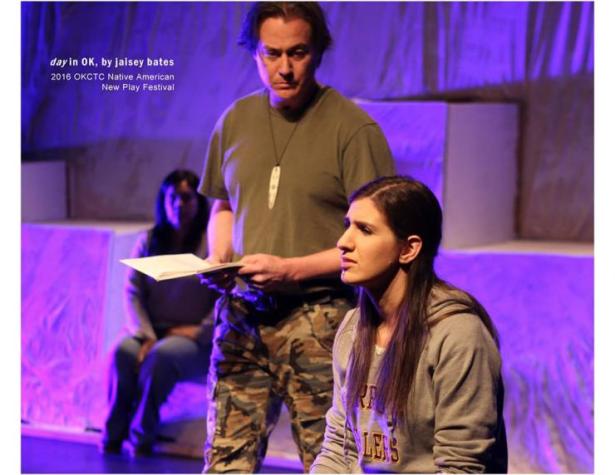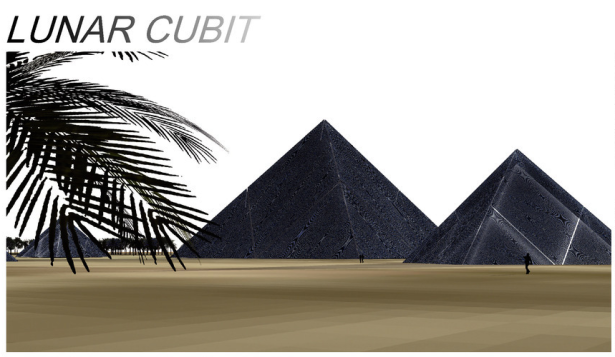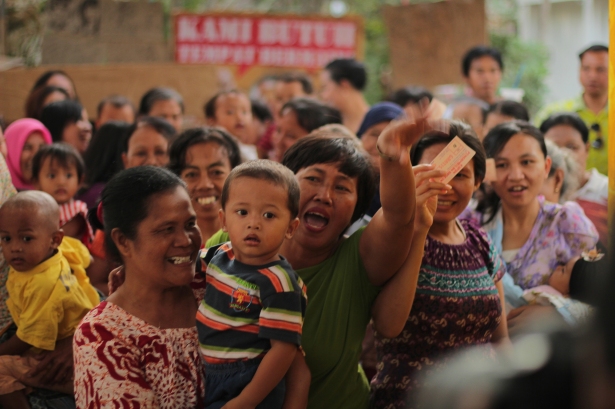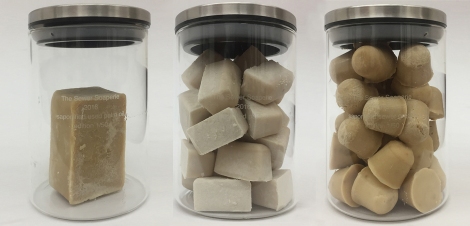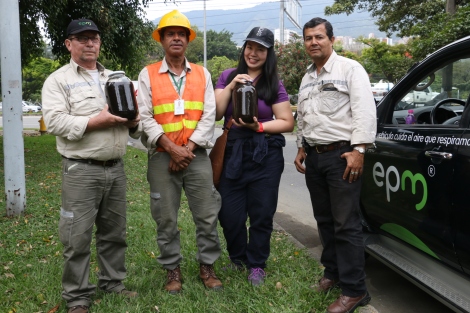This post comes from the Artists and Climate Change Blog
This article was originally published on HowlRound, a knowledge commons by and for the theatre community, on September 20, 2016.
I am a theatre director in an early stage of thinking about performance and climate change—more of an idea and question gathering place than a how-that-translates-to-process-and-dramaturgy place. This is a tour of some ideas.
This past fall, I co-organized a conversation with Sarah Cameron Sunde and Moe Yousuf in conjunction with the Theatre Without Borders Conference. About twenty-five folks (across disciplines and nationalities) shared personal entry points to making real the massiveness of climate change; themes I remember include anticipatory grief, environmental racism, individual vs. collective agency, and tempered hope in human ingenuity and the earth’s resilience. Then, Sarah invited Moe to lead us in making pickles. Pickling framed our conversation in a longer experience of time, and it gave (some of) us a reason to meet again later to experience our (well, failed) pickles.

Also thinking of a conversation I had with Dehlia Hannah. Hannah is a curator-as-research practitioner whose current project A Year Without Winter, co-led with scholar Cynthia Selin, gathers scholarly and artistic responses to climate change over three years in resonance with the Year Without a Summer and its role in forming Mary Shelley’s Frankenstein. (The Year Without a Summer, 1816), was a tumultuous global cooling event sparked, in part, by a massive volcanic eruption.) When I asked about hope in the context of climate change, Hannah expressed concern that hope can be an uncomfortably close bedfellow with denial. Even if climate change is not an apocalyptic disaster flick, it will effect real and unknown loss—to the planet’s ecological systems, and to the human (and other) life inside those systems. Imagining climate change will require being present to loss—anticipated and experienced. Maybe to replace hope with attention. How do we sustain attention in the context of climate change? A Year Without Winter provides a conceptual framework, a dialogical network, and a three-year incubation to connect wide ranging entry points in imagining and responding to anthropogenic climate change. This creative system models an ecological way of seeing.
I’ve been thinking, for my own work, about what makes up an ecological way of seeing. Some entry points that make sense to me include complexity, corporality, contingency, and collective action.
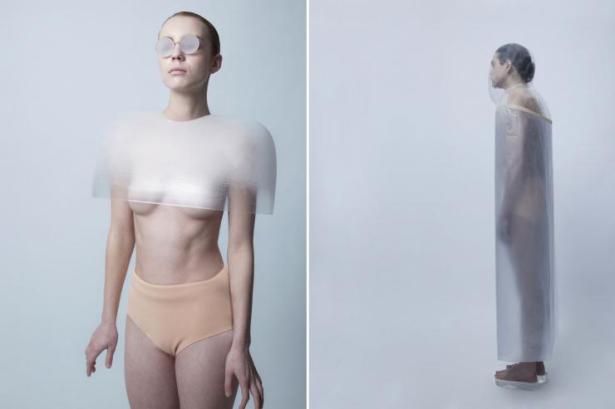
Complexity
Anthropogenic climate change happens on a scale that’s hard (for me) to imagine. It’s not drought, hurricane, or weather in general. It’s a change in long-term patterns of weather. This distinction feels important because chronic, systemic change requires different attentions than extreme weather events. Warming global climate doesn’t follow a dramaturgy of crisis, although, as we are seeing more and more, it can contain crisis. It follows more closely a dramaturgy of chronic illness. Something that will play out over time in unpredictable ways and that requires continual and curious action. It requires urgency, but urgency without attachment. We will not see all the consequences of our actions—good or bad—within our lifetime. How does my theatre rehearse a seeing with this kind of sustained and unresolved attention?
Corporality
As weather patterns change, stories about folks’ connection to land and life take on new stakes. Narratives about human control over nature contributed to seeing the natural world as disposable resource, contributed to actions that created climate change. I don’t think this assumption, especially embedded in Western culture, can get us out of climate change. How does my theatre center stories (remembered or reinvented) that situate human beings as part of larger living and evolving systems?
Contingency and Collective Action
Something that impacts the whole planet requires the whole planet to respond. I grew up wearing a lot of sweaters inside in the winter and rolling down car windows in the summer; and I think a performance of personal responsibility is a meaningful practice. I rehearse mindfulness, but I don’t think it’s an impactful practice in terms of emission reduction. This requires not just pooling individual actions, but changing regulations, energy sources. This requires collective action. How is my theatre rehearsing a personal awakening to collective action? And, what are the images I have for the collective? As many folks in this series have pointed out, climate change disproportionately effects many communities of color. Rebecca Solnit has some language I appreciate about natural disasters as policy disasters, as putting pressure on existing social inequalities (particularly referencing Hurricane Katrina and discussed cogently in an On Being interview.) How does my theatre enact and envision a global community that is multivalent, fluid, and offers specific critique to entrenched systems of oppression?
One of the formidable aspects of man-made climate change is that we don’t know exactly how the earth will respond to a rising average temperature. In order to be able to respond deeply and impact fully, it seems important that our attending prepares us to continue not knowing. An older image of apocalypse is not physical destruction, but disclosure of knowledge. As artists, we know something about waiting for this apocalypse, about doing the deep and urgent work of being changed, with the trust that changed seeing leads to changed action, changed policies. I admire projects like Chantal Bilodeau’s Arctic Cycle, Mondo Bizarro and ArtSpot’s Cry You One, and Lars Jan’s Holoscenes for crafting such spaces. And, I would add, this work, this orientation to apocalypse is also a definition of hope. A hope I can live with.
______________________________
Emily Mendelsohn is a Brooklyn-based director. As a member of Waypoints, an ensemble of US/East African artists, Emily directed Erik Ehn’s Maria Kizito and Deborah Asiimwe’s Cooking Oil through residencies in Kigali, Kampala, New York, New Orleans, and Los Angeles. Emily co-curates Border Labs, a process and performance exchange between artists in Los Angeles and Tijuana. She is a recipient of the TCG Global Connections In the Lab program and a Fulbright Fellowship in Uganda. Affiliate artist New Georges, member Theater Without Borders. MFA CalArts.
About Artists and Climate Change:
Artists and Climate Change is a blog that tracks artistic responses from all disciplines to the problem of climate change. It is both a study about what is being done, and a resource for anyone interested in the subject. Art has the power to reframe the conversation about our environmental crisis so it is inclusive, constructive, and conducive to action. Art can, and should, shape our values and behavior so we are better equipped to face the formidable challenge in front of us.







